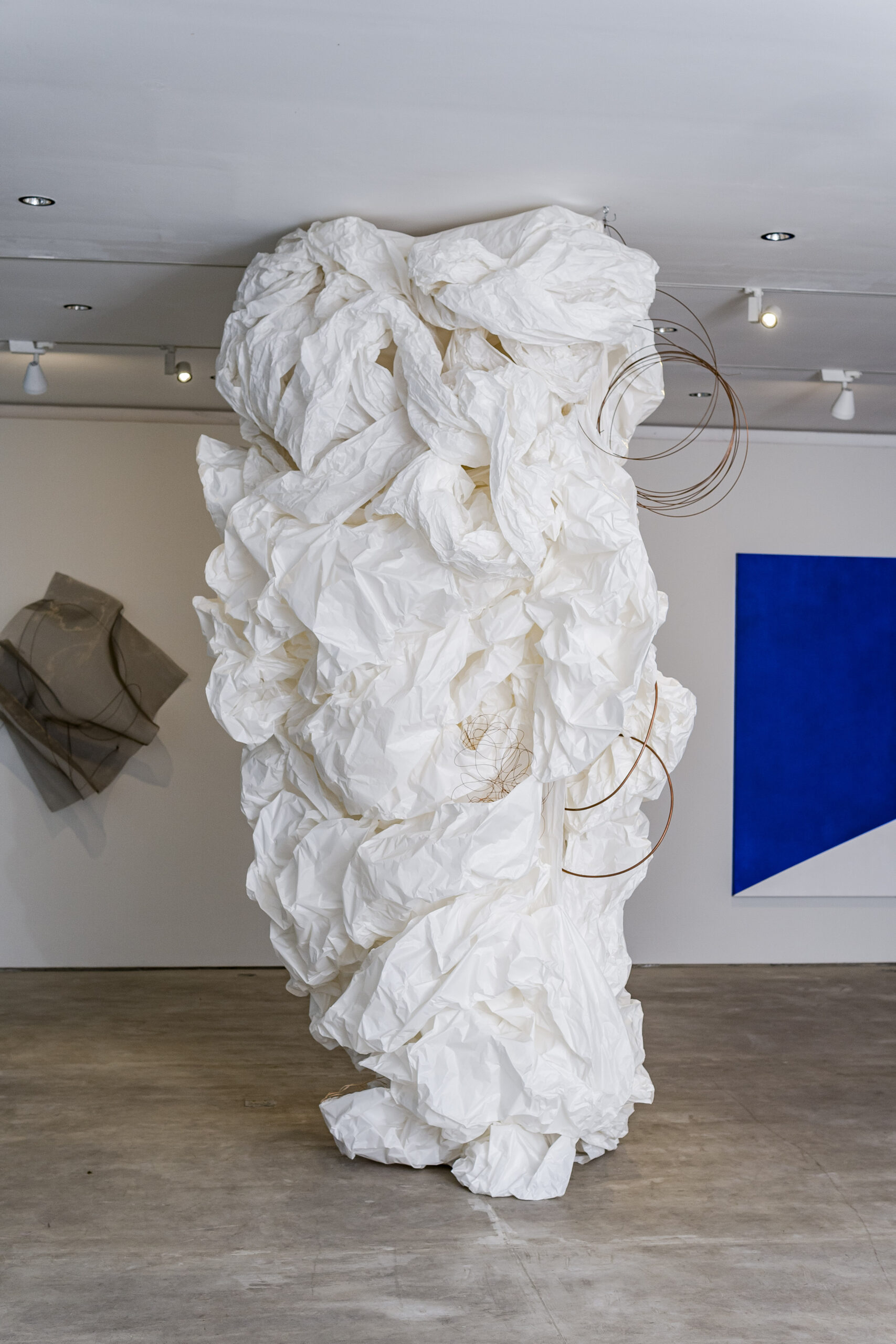a leap_ from the 80s to the present
24 may - 02 ago_ 2025

A leap – from the 80s to the present
Ana Carolina Ralston
The word leap vividly captures the spirit of the 1980s in Brazil. These two syllables — describing a bodily impulse that propels us upward and alters our perspective — offer a striking analogy for the effervescence, progress, and sense of freedom that marked the country’s re-democratization. The end of the military dictatorship encouraged artists to rethink sociopolitical and identity-related issues in their work with renewed boldness, experimentation, and, above all, optimism. But the leap we speak of in this exhibition — currently occupying the ground floor of Galeria Raquel Arnaud — does not stop there. It also refers to a temporal leap, one that takes off in the 1980s and lands beyond 2020, spotlighting artists who emerged amid that creative upheaval and who remain active, radical, and innovative in their practices to this day.
The temporal arc presented in this leap reveals certain particularities — chief among them, a striking consistency across the practices of eight women artists who rose to prominence during that era and have long been part of the gallery’s program. The evolution of their critical thought, convictions, materials, and mediums attests to an enduring commitment to their respective lines of inquiry. Though their themes and concerns are continually reworked through new formats and media, they remain faithful to the conceptual cores they have long pursued. A shared affinity for works on paper also binds them: drawings, watercolors, and pigments laid across what is perhaps the earliest of all visual art supports. An environmental consciousness — and the relationship between the natural world and humanity — runs through the selected works, whether through the use of certain materials or through the way these paintings and sculptures interact with their surroundings and provoke reflection.
The exhibition design reinforces this dialogue between past and present. Works from both ends of this arc are placed side by side, highlighting their resonances and transformations. The black-and-white gestural brushwork of Célia Euvaldo, so emblematic of the 1980s and once used to define direction and movement, meets her more recent, densely material canvases where color flows in. Elizabeth Jobim’s early gestural abstraction — once a sensorial and subjective interpretation of everyday objects — now converses with her present-day geometric forms, marked by a striking embrace of negative space and a dynamic exchange with architecture and the viewer. The surreal-tinged drawings that marked the early trajectory of Ester Grinspum evolve into paintings and sculptures that give form to the interplay between space and occupation, working through the transience of the line. A dialogue around fragility, instability, and permanence of matter forms the through line between Geórgia Kyriakakis’s works, separated by more than four decades.
In a reversal of trajectory, Frida Baranek juxtaposes her iconic industrial material entanglements with her most recent works in handmade paper. The body’s movement and a continual exploration of spatial potential — hallmarks of Iole de Freitas’s practice — are reflected in two three-dimensional pieces created nearly fifty years apart, yet still engaged in questioning the gravitational forces of the spaces we inhabit. Sculptural structure is also the central axis of Maria-Carmen Perlingeiro’s work, in which she delicately and rigorously investigates mineral environments and their intrinsic relationship to light — initially through marble, and more recently through alabaster and slate. In Shirley Paes Leme’s work, core themes revolve around natural materials such as wood and ephemeral elements of daily life — air, smoke — surfacing across video installations, sculpture, and her more recent text-based paintings.
The two temporal poles present in each artist’s production reaffirm their roles as researchers of space, matter, and the conditions of life that surround us. The revolutionary time spoken of by philosopher Walter Benjamin (1892–1940) resonates in the thought and work of the eight artists featured in this exhibition — artists who, like him, challenge the notion of time as linear or continuous. The rupture of temporal flow through this interval reconfigures the very idea of the present, revealing how memory may be reinvented through unexpected connections with the world we now face.

